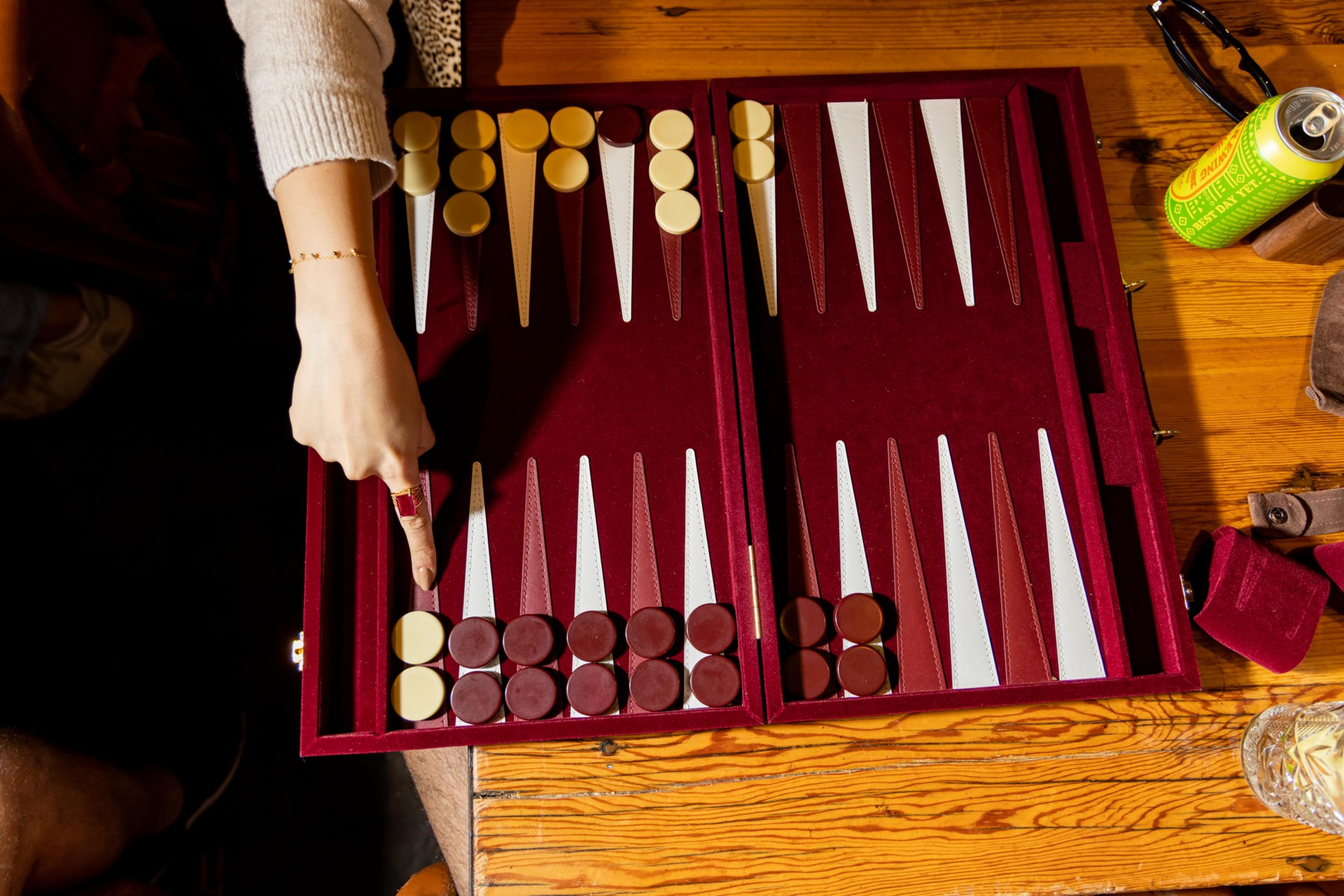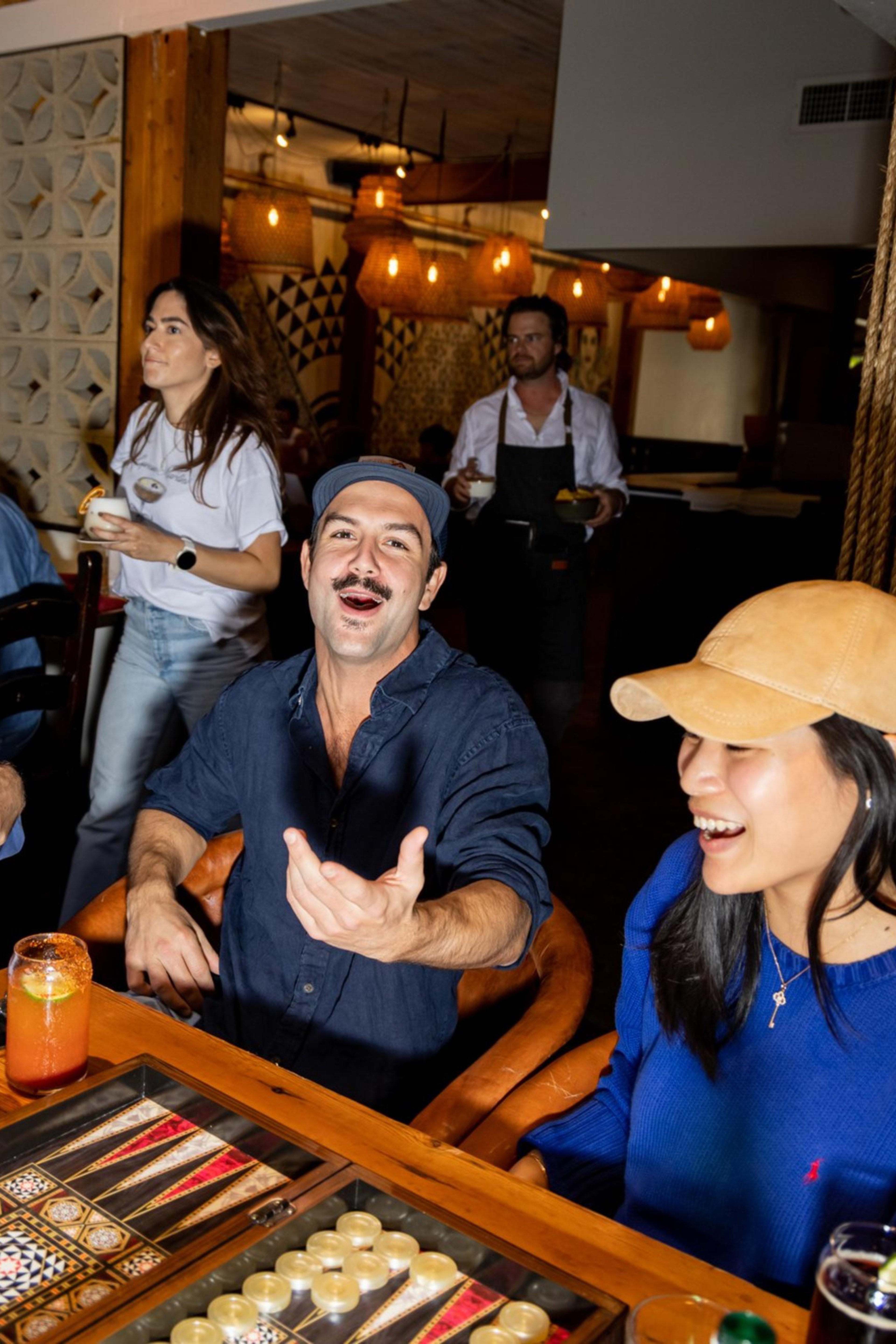Millennial couple Oren and Ari have played each other in backgammon many times, but never like they did Sunday at Flores, a Mexican restaurant in the Marina. It was the city’s first Backgammon Social Club, and the goal was not to win but to feel alive.
“You’re not just absorbing mindless videos,” said Ari, a 38-year-old crypto worker, who, like his husband, declined to provide his full name. “It gives people a sense of agency.”
Traditional, analog games like backgammon and mahjong are gaining in popularity these days. That’s because they force people to touch grass — or, in the case of the 5,000-year-old gambling game — black and white “stones.”
“We view it as a way to bring people together in a way that’s not partying,” said Gina Macropulos, the 28-year-old who co-founded the Backgammon Social Club. “Putting a backgammon board between two people really takes the pressure off the social interaction. People are using their hands — like, they’re not on their phones.”
Dating back to 17th-century Britain, the modern form of backgammon relies both on skill and chance. Dice rolls determine how far you can move your 15 pieces around the board’s 24 triangles, which are called “points,” with the goal of bringing all your pieces off of the board. Because of the luck of the roll, beginners can beat experts, which makes each game novel and exciting, fans say.


Now an MBA student at Stanford, Macropulos and her co-founder, Eugenia Camargo, came up with the idea for the club last year as a way to promote a new Greek restaurant in Miami, where they lived at the time. Since backgammon is a big part of Greek culture (along with many Eurasian countries, for that matter), Macropulos thought it’d be “the perfect theme.”
They invited friends and family, partnered with local brands, like a family-owned hemp skincare company, and made an Instagram account to market the event. After 50 people showed up — including a couple of complete strangers who showed up right on time with boards in hand — Macropulos decided to run it back.
“Once a month very quickly became once a week,” she said. “It’s really helpful for restaurants, because they get to activate their space on a slower night. We bring 50 to 100 people to order food and beverages.”


Since launching in Miami, the club has operated at social clubs and restaurants in Philadelphia, London, and now San Francisco. Game nights attract players aged 25 to 75, said Macropulos — so pretty much everyone.
At Flores last Sunday, around 100 people showed up. Millennial women in leather jackets dueled against Gen X men in baseball caps. As dice rolled, expensive watches glimmered over the boards, which ranged in design and color pattern.
A 27-year-old Stanford grad student named Allison said she had only played the game a handful of times. But she already saw herself in her playing style. “I like that there is strategy involved,” she said. “I like that you can choose to be violent or not in your approach.”
Kimia Shirkhani, a 29-year-old tech worker, came to the event with her parents, Mansour, 63, and Faribi, 62, who learned how to play as kids growing up in Iran. Like the other attendees, the couple had already taught several people how to play that day.
“I enjoy playing,” Mansour said, “and I enjoy seeing other people play.”

